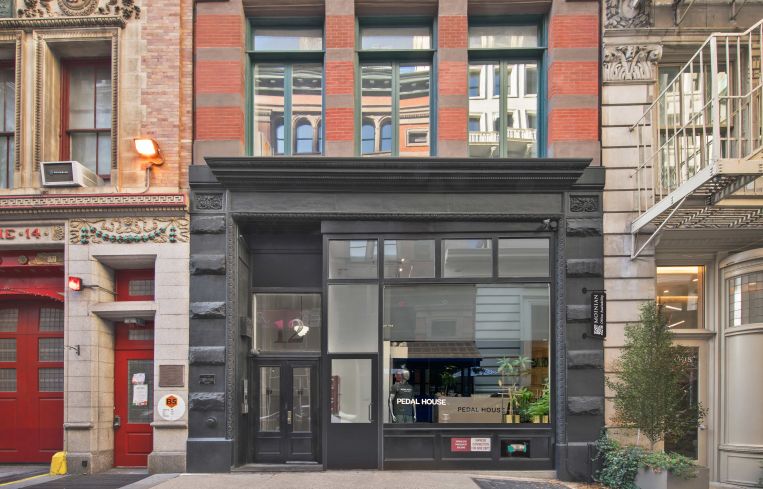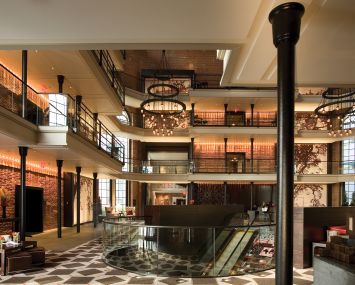Presented By: The Moinian Group
Moinian Group’s Flatiron Portfolio Leasing Strategy Pays Off
By The Moinian Group May 30, 2023 8:00 am
reprints
The Moinian Group owns and operates some of the most desirable Class A office and residential properties in New York City. Recently, the company has also had resounding success with a portfolio of seven nid-block properties concentrated in the Flatiron District, including mixed-use office and retail at 53-55 West 21st Street, 29 West 17th Street, 10 West 18th Street, 147 West 24th Street, and 37-39 West 17th Street; and mixed-use residential and retail properties at 54 West 22nd Street and 12 East 18th Street. The success of this portfolio is no accident, as Moinian has subverted the traditional approach to office leases by offering furnished spaces with shorter, more flexible lease terms. Partner Insights spoke with Ted Koltis, executive vice president, Commercial Leasing for Moinian, about the company’s success in the Flatiron District.
Commercial Observer: What are some of the notable aspects of Moinian’s Flatiron portfolio that make it stand out in today’s market?
Ted Koltis: Our Flatiron portfolio is very unique for a landlord of our size. These are five- to seven-story elevator buildings on side streets in the Flatiron District, seven buildings totaling about 163,000 square feet. Two are residential and five are office. It’s unique because large landlords that have large Class A attended-lobby-type office properties like we do generally do not also have assets of this size. For us, these assets are close to our DNA, as Joe Moinian has been investing in Midtown South for over 40 years. We’ve developed a strategy for these properties with smaller tenants, who are happy to have their own floors in buildings like these.
Talk about the success Moinian has had with conversions, and why you’re succeeding where others are struggling.
It’s a bit easier for these properties to make that transition because Midtown South is traditionally more favorable to residential. When this portfolio was first acquired, around 40 years ago, the buildings were all set up as office. Since then, we have successfully converted two of the buildings to residential. One of them is happening right now: 54 West 22nd Street. There are also fewer zoning issues to encounter here, and since we have significant experience with Class A office and residential buildings, we are now distilling that level of quality down to our smaller buildings.
Conversions aside, talk about the renovations Moinian has undertaken in the office buildings within this portfolio.
We wanted our office buildings to stand out visually, because a lot of these side streets are just one nondescript building after another. We wanted to elevate our assets in this five-block, two-avenue area, creating our own small brand within this submarket. So we’ve designed new lobbies for all of these properties. We’re currently under construction and will sequentially be renovating every one, including placing new and distinctive exterior signage on each property. There will be a consistent theme of sophistication and high-end finishes running through each of these properties, and as you walk down these streets, it will catch your eye that multiple buildings have these similar distinctions that help them stand out.
What sort of success have the renovations brought as far as attracting tenants to this portfolio, and how do you measure that success?
As an office owner our goal is to provide a space where tenants can flourish, grow and be successful. For us, that also means having them continue on as tenants of The Moinian Group, even when they outgrow a smaller asset. Neon Moose, a subsidiary of Justworks, leased 2,500 square feet from us at 29 West 17th Street in 2021. Only six months into their lease, they advised us that they were hiring and needed more seating. So we relocated them to 53-55 West 21st Street for an extended three-year lease. Chums Referral, an online retailer, leased a full floor of 2,500 square feet in 2021, and a year into their two-year lease they leased an additional floor in the building.
We think there’s a payback for all this beyond just a single tenant or single deal. One of the distinctions of our approach to this area is the strategic implementation of shorter-term deals. We look at our office properties here as an incubator for our larger assets, so we give greater flexibility on term than most larger landlords. That flexibility brings us success in our leasing volume. Over the last 18 months, we’ve leased or renewed about 30 percent of this portfolio. Typically, in a larger portfolio, that number is about 10 percent annually, so that data confirms our strategy is producing leasing outperformance.

What do you mean by flexibility on term?
In this area, you can’t expect tenants to give you a long-term lease, because that’s just not how typical Flatiron side-street tenants of this size operate. These tenants aren’t making five- or 10-year commitments. We’re unique because we threw away the playbook measuring the investment we make, versus the return on a single deal. Instead, we are focused on outperforming on a rent basis deal after deal on that space with that investment. We achieve rents in these side-street buildings that are close to what we get for some of our attended-lobby buildings in Midtown South, because we’ve differentiated ourselves by redoing the lobbies, building spaces brand new, and furnishing the spaces so small companies can get to work and not worry about a long-term financial commitment. In this market, the side-street building market, one typically does not get owners putting that type of capital into them. Most mom and pop owners don’t even want to make the investment to white-box spaces. By taking the same investment approach we do in our larger buildings, we view it as a long-term differentiating aspect to attract the best quality tenants.
What sort of tenant mix has Moinian been attracting there?
The majority of tenants in that area tend to work in the creative industries or tech. We have several software companies, small record labels, content creators and marketing companies. It’s a reflection of the vibrancy and creativity that is endemic to the area and draws off the arts, music and restaurant scenes that the Flatiron area is famous for. These tenants will typically have 10 to 20 people in their office. The privacy of having their own full floor is attractive to them and important to their company culture, as many of them work odd hours and weekends. They don’t view a typical office building as one that will meet their needs.
What are your office vacancy rates within this portfolio?
Overall, we’re close to 90 percent in this portfolio. But an even more powerful statement is that out of the five office buildings, three are 100 percent leased. We find that most spaces lease within weeks of being fully built.
How has this approach to your Flatiron office buildings affected your retail portfolio in that area?
The retail portfolio there has been surprisingly strong. We are proud to say that none of our retail tenants were forced to close down during COVID. I think that speaks volumes not just about the quality of tenants that we have, but also the area. The Flatiron area is heavily residential, unlike typical office submarkets, which shielded the area from being hurt by work-from-home. So retailers here were not only able to sustain their businesses, but many have thrived, as many of the streets have come back to full capacity seven days a week.


